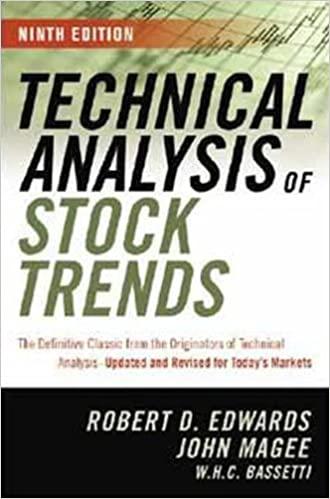Answered step by step
Verified Expert Solution
Question
1 Approved Answer
Please answer the following questions: # 2 , # 5 , # 1 0 , # 1 3 , # 1 4 , # 1
Please answer the following questions: # # # # # # # # # # and #
Question :
What is the stock's Beta beta if the average market return for the stock is and the interest yield on year US Treasury Bonds is and the required or expected rate of return is
Question options:
a
b
c
d
Question :
Given the following information, calculate the company's internal growth rate. Return on Equity ; Dividend Payout Ratio
Question options:
a
b
c
d
Question :
The Black Scholes Options Pricing Model BSOPM is an accurate framework for estimating equilibrium, or theoretically correct prices for Call and Put options contracts for which of the following reasons?
Helpful Hint: Select the MOST correct or MOST representative answer from the choices listed.
Here are the choices to select from.
Question options:
a Stock prices and price changes are lognormally distributed.
b Natural logarithmic calculations are based on the use of base e and since Black Scholes incorporates base e into its framework, it is able to accurately estimate equilibrium or correct market prices.
c Black Scholes is a nonlinear based model that is able to take into account a greater or more realistic range of possible outcomes.
d Stock prices and price changes are lognormally distributed. Natural logarithmic calculations are based on the use of base e and since Black Scholes incorporates base e into its framework, it is able to accurately estimate equilibrium or theoretically correct market prices.
e Since the BSOPM is a transformation of the Simple Options Pricing Model, this statement is not entirely correct with regards to being more accurate in calculating theoretically correct prices.
Question :
Which of the following involves the asset allocation decision?
Question options:
What asset classes should be considered for investment?
What policy weights should be assigned to each eligible asset class?
What are the allowable allocation ranges based on policy weights?
What specific securities or funds should be purchased for the portfolio?
Question :
Which of the following decisions are involved with constructing an investment strategy?
Question options:
What asset classes should be considered for investment?
What policy weights should be assigned to each eligible asset class?
What are the allowable allocation ranges based on policy weights?
What specific securities or funds should be purchased for the portfolio?
Question :
Using the Capital Asset Pricing Model CAPM the required rate of return for an individual stock is equal to which of the following:
HELPFUL HINT: The key to solving this question is to understand how mathematical terms, equations andor functions are expressed verbally!
Select from the following:
Question options:
a Risk free rate plus the market risk premium plus the Beta coefficient.
b Risk free rate plus the market risk premium minus the beta coefficient.
c Risk free rate times the market risk premium plus the Beta coefficient.
d Risk free rate plus the market risk premium times the Beta coefficient.
e Risk free rate times the market risk premium minus the Beta coefficient.
Question :
A stock is undervalued if its:
Question options:
a Market price exceeds its intrinsic value
b Market price is less than its intrinsic value
c Market price equals its intrinsic value
d Beta coefficient is less than
e Beta coefficient equals
Question :
The APT Arbitrage Pricing Theory model posits that the most significant factors influencing the required rate of return are:
Question options:
a Inflation and industrialeconomic growth
b Inflation, industrialeconomic growth and risk premiums
c Inflation, industrialeconomic growth, risk premiums, risk free rate and a random error term
d Industrialeconomic growth, risk premiums and a random error term
e Risk free rate, random error term, Beta coefficient and risk premiums
Question :
When managing a bond portfolio, buyandhold investors strive to replicate or match the content of a particular bond index.
Question options:
True
False
Question :
Active bond management strategies requires the manager to base portfolio construction, as well as buyandsell decisions by forming an outlook on expected trend in the term structure of interest rates, and make decisions accordingly.
Question options:
True
False
Question :
Calculate duration for a bond based on the following: time to maturity years, required rate of return and coupon rate
Question options:
a
b
c
d
e
f
Step by Step Solution
There are 3 Steps involved in it
Step: 1

Get Instant Access to Expert-Tailored Solutions
See step-by-step solutions with expert insights and AI powered tools for academic success
Step: 2

Step: 3

Ace Your Homework with AI
Get the answers you need in no time with our AI-driven, step-by-step assistance
Get Started


